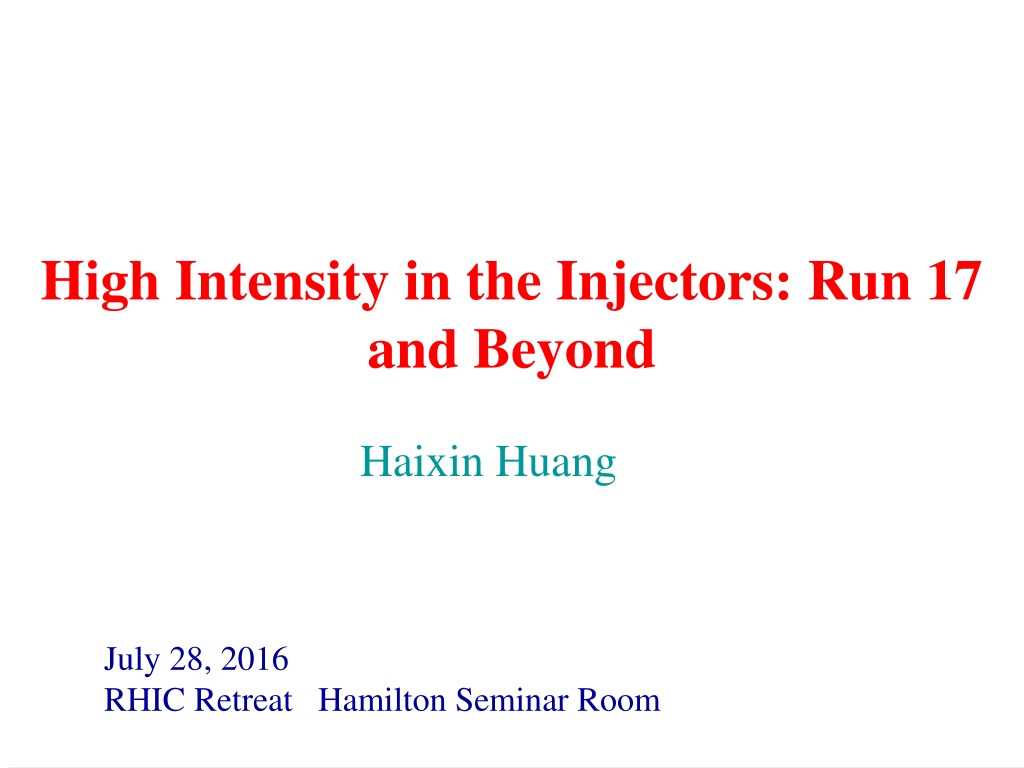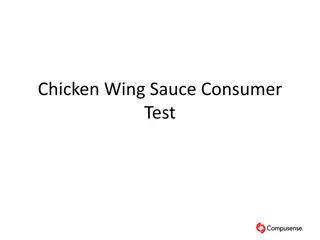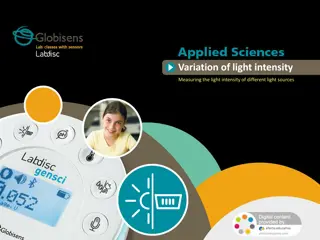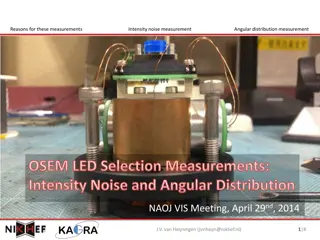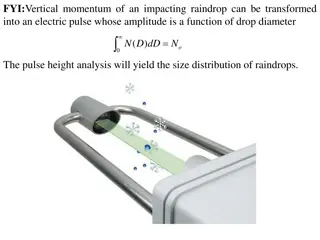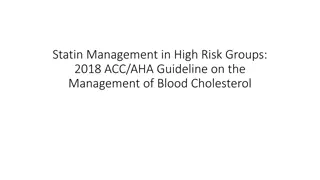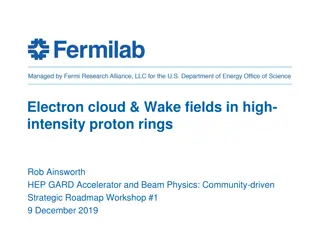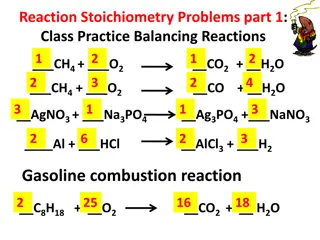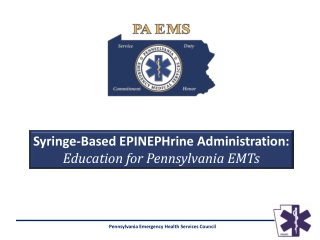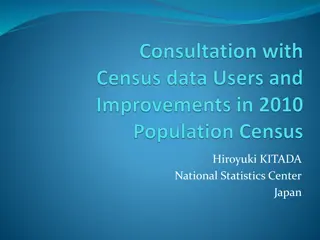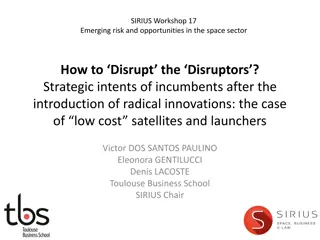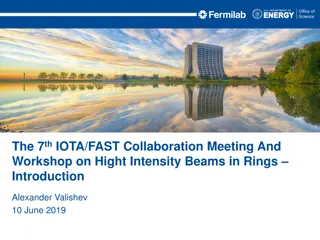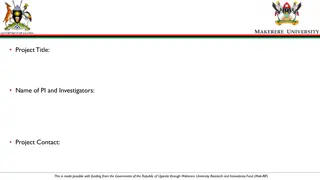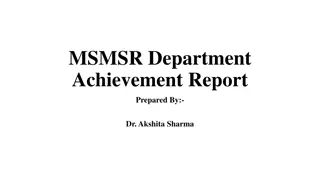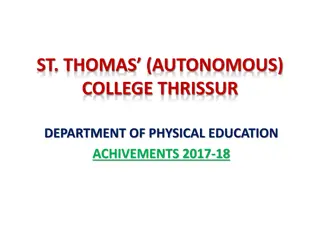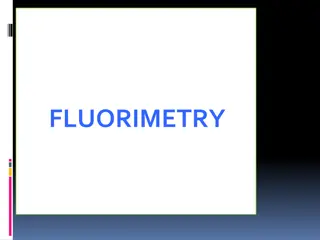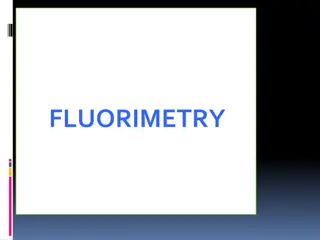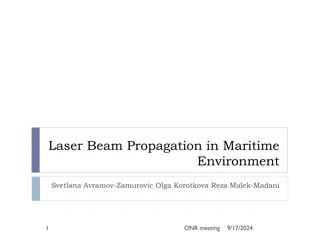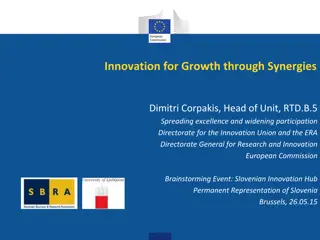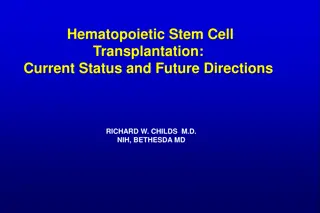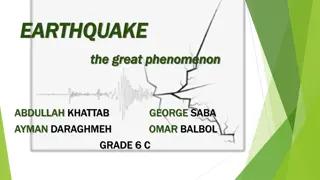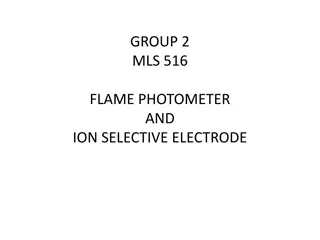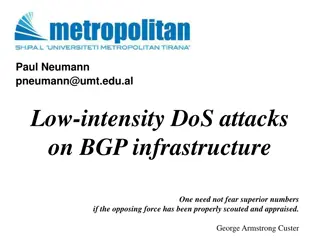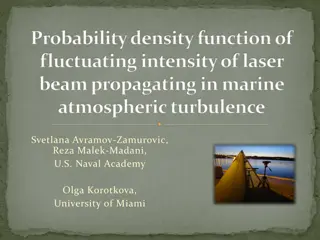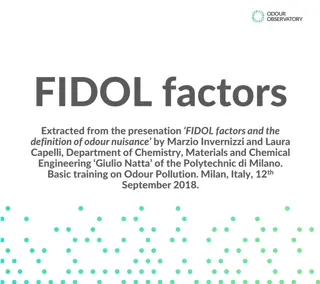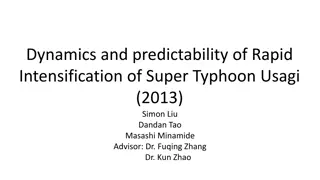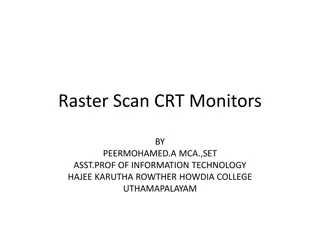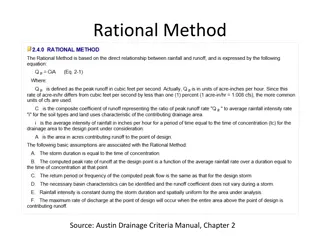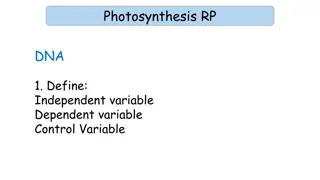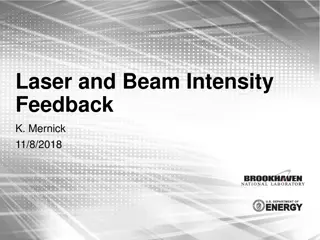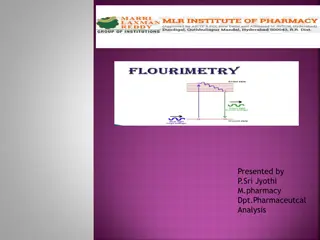High Intensity in the Injectors: Achievements and Innovations
Booster ring realigned, AGS octupoles revived, stopband correction developed. Focus on compensating loss, species intensities, AGS bunch merge, and enhancements for RHIC. Challenges in Ru isotope separation and achieving desired intensities discussed.
Uploaded on Oct 04, 2024 | 0 Views
Download Presentation

Please find below an Image/Link to download the presentation.
The content on the website is provided AS IS for your information and personal use only. It may not be sold, licensed, or shared on other websites without obtaining consent from the author. Download presentation by click this link. If you encounter any issues during the download, it is possible that the publisher has removed the file from their server.
E N D
Presentation Transcript
High Intensity in the Injectors: Run 17 and Beyond Haixin Huang July 28, 2016 RHIC Retreat Hamilton Seminar Room
What is New This Year Booster ring was surveyed and realigned in summer shutdown 2015. The orbit flatness is noticeable afterward. However, the NSRL beam line was not realigned. Four old AGS octupoles were revived in last summer shutdown: K15 and I15 as the first pair. B5 and G5 (moved from L5) are the second pair. Power supplies for half of the sextupole correctors are installed. Stopband correction application was developed by control group. The remainder of the 8 PSs will be installed this summer shutdown. The projected RHIC luminosity is based on a working 56MHz cavity. Without it, can we compensate the luminosity loss with more bunch intensity? This calls for 12->6->2 merge scheme. 2 Haixin Huang
Intensity for Different Species Au: 12->6->2. Worked on both high(normal RHIC operation) and low (CeC commissioning) intensities. Worked with both inputs: EBIS and tandem. The AGS ramp was modified (adding a merge porch above injection to mitigate space charge). To do the merge at a higher energy, the frequency of L10 cavity has to be modified. Ru: the isotope needed by expt. has only 5% natural abundance. It will be hard to separate this isotope from others from EBIS. Need to find out what intensity we can deliver for one bunch with beam out of tandem. d: 12->6->3(only 8 Booster pulses with 2 buckets occupied at flattop). We have more than enough intensity in the past (1.4E11/bunch in run8), there is no need to have more tandem pulses. Proton: no cold snake available this run. Without cold snake and no Booster scraping, we can get 5E11/bunch. 3 Haixin Huang
Gold Setup 4 Haixin Huang
12->6->2 Bunch Merge in the AGS Bunch merge scheme was proposed by SY. 6->3->1 merge was tested in run15. Kip has done extensive simulations. Compared to 8->4->2, it can provide up to 50% more beam, but also double the filling time (almost). The natural next step is to go to 12->6->2, with a little longer AGS cycle length. Several things have to happen first: EBIS source has to reliably provide 12 pulses per super cycle; Booster merge energy has to be raised to meet PPMR limit; AGS beam dump system has to work (prevent possible holes on beam pipe). The LLRF upgrade should be credited for better bunch merge in the Booster, at a higher merge porch, and 6->3->1 merge in the AGS (especially Freddy). Since RF group can raise the L10 frequency, the higher merge energy in AGS is an obvious thing to do for space charge mitigation(Keith). It was an obvious thing to do (provided it worked) because it would allow for h=10 acceleration and mitigate space charge. Although acceleration with h=10 worked, it was not used in operation. S.Y. Zhang, H. Huang, C-A/AP/556, Au Intensity Enhancement for RHIC. C.J. Gardner, C-A/AP/563 Simulation of 6 to 3 to 1 merge and squeeze of Au77+ bunches in AGS. 5 Haixin Huang
AGS 6->3->1 Merge: Initial 6 Bunches Done by Kip Gardner Initial 6 Au77+ bunches to be merged. Total emittance of 6 bunches is 0.60 eV-s per nucleon. 6 Haixin Huang
Completion of 6 to 3 Merge Simulation Done by Kip Gardner 7 Haixin Huang
Completion Merge of 3->1 in the AGS Done by Kip Gardner The area inside the match border is 0.612 eV-s per nucleon, growth is just 2 percent (small). The point: The simulation shows that with the available RF voltages and merging times one can merge the 6 bunches into 1 with only small emittance growth. 8 Haixin Huang
12->6->2 Bunch Merge in the AGS (2) The duty cycle was first extended from 5.4sec to 6.4sec, but it was reduced to 6sec in the early June. The EBIS source needed maintenance twice this year. Not clear if it is related to the 12 pulses and shorter cycle (for the one in June). There were a few PPMR trips in the early operation. It turned out that the algorithm of the trip level setup was too conservative. This was later modified and there was no issue since. The satellite bunch reduction is also important to maintain high bunch intensity. Their percentage is around 4-5% for Au beam. The bunch merge scheme for RHIC fill switched from 8->4->2 to 12->6- >2 on Feb. 22 for fill 19587. 9 Haixin Huang
12->6->2 Bunch Merge in the AGS (3) The peak bunch intensity at AGS extraction is 3.15E9, which is above the intensity RHIC can take. AGS intensity was detuned by various ways to get 2.5-2.6E9/bunch, such as mistiming the Booster injection bump, relaxing the bunch squeeze to have large baby bunch percentage, inserting BtA multiwires, or combinations. The longitudinal emittance is about 0.7eVs and the transverse emittance is about 1.7-1.8 m (rms). The bottleneck of transition won t be an issue for the coming low energy run in 2019-20. For further gain of bunch intensity, one is to increase the EBIS intensity (ongoing upgrade), and the other one is to increase number of bunch to merge. But the later one will generate even larger longitudinal emittance. Improvement request: The reliability and easiness of loading RF archives ( say for example when loading from one user to another user). 10 Haixin Huang
Au Beam from Tandem (6->2) EBIS repair work required to set up injectors with Au from Tandem. The Booster merge was changed to 6->2->1. With 6 pulses from Tandem, the AGS bunch merge was changed from 12- >6->2 to 6->2 (one less merge). This improved the AGS injection match and bunch intensity of 2.5E9 was achieved and met the limited RHIC intensity requirement. This is a new record for Au beam intensity at AGS extraction with input from tandem. Needless to say, it is not fair to compare the setup of one week (tandem, 2.5E9) with setup of several month (EBIS, 3.15E9). Haixin Huang
Deuteron Setup 12 Haixin Huang
Deuteron Intensity Deuteron setup uses 2->1 merge in the Booster, and 12(only 8 occupied)->6- >3(only 2 occupied) merge in the AGS. As we have more than enough intensity for RHIC, no need to use more tandem pulses. Acceleration was done with h=9. Longitudinal emittance at AGS extraction is small, about 0.41eVs, for 2.2E11/bunch. Typical RHIC intensity limit is about 1.8E11. The bunch intensity reached as high as 3.8E11, when a new target is installed (typically target lifetime is one week). The typical intensity is 2.5E11. The transverse emittance is about 2.5-3 (rms), longitudinal emittance is about 0.6eVs (to match the Au beam). Satellite bunches are not an issue for deuteron. The duty cycle was 5.0sec. There was a problem of AGS bunch oscillation at injection. This was mitigated by moving the AC phase loop on before beam injecting into AGS. A bunch-by- bunch damper will be nice but it all depends on if we will push deuteron intensity further and if we are going to run light ions with multiple bunches again. 13 Haixin Huang
Deuteron Merge (8->4->2) in the AGS Beautiful work by Keith 14 Haixin Huang
Ruthenium Setup 15 Haixin Huang
Ruthenium Beam Development Ru+96 and Zr+96 operation is scheduled for run18. There are enriched Zr+96 material available but not so for Ru+96. Due to its mere 5.4% natural abundance, it is hard to produce such beam with good intensity from EBIS. The plan was to use tandem beam. The major part is to see the stripping efficiency in the BtA line, which is a big unknown. Ruthenium beam was developed in the injector with tandem 600us (the pulse width can be set up to 1000us) pulse length. 8 pulses from tandem was also used. The bunch merge 8->4->2 in the AGS was done. Longitudinal emittance is about 0.4eVs and transverse emittance is about 1.5 m (rms). The bunch intensity is about 1E9 at AGS extraction. There is no satellite bunch issue with Ruthenium beam. Several ways to get further intensity gain: longer tandem pulse and/or 12->6->2 merge. With longer tandem pulse, the Booster injection efficiency may go down, so the intensity gain can not be scaled linearly. 12->6->2 will requires more pulses from tandem but it may not be a problem as the ruthenium is a weaker beam than gold. 16 Haixin Huang
Ruthenium Intensity Booster Late AGS Extraction Frequent beam loss at F to B bank switch. No time to tune it out. 17 Haixin Huang
Ruthenium Intensities (from Keith) 1) About 8.4e8 per pulse from Tandem in sec 29. (the transformer is in low gain and the signal is in the noise). Unable to change it to high gain. So big uncertainty as to the exact value. This is when running 1 pulse from Tandem. 2) Assuming the sec 29 measurement is correct, the injection efficiency is about 90% for a 600 us pulse. 3) The Booster output/input was about 85-90% for 1 Tandem pulse. There was as much as 7.6e8 at Booster late. There was little acceleration loss. 4) For 8 Ru +12 Tandem pulses, there was a total of 4.3e9 at Booster extraction, or 5.4e8 per Booster cycle. This is lower than the one pulse case because the Tandem current was lower on that day. 5) 66% BtA stripping efficiency 6) On the good cycles, AGS (after last transfer)/Booster late was about 50%. 7) This gives 2.16e9 Ru +12 in AGS after 8 transfers 8) Just a little loss at ramp to merge, so let's say 2.1e9 after AGS merges. 9) The 'satellite' bunches are negligible. 10) A little acceleration loss at Flat to Pulsed magnet bank transfer 11) About 1.0e9 Ru +44 ions per bunch at AGS extraction.
Proton Setup 19 Haixin Huang
Proton Setup Booster survey done last summer changed the Booster alignment significantly. The old scraping point at E7 is not valid anymore. It is good that we found a new orbit function to scrape beam vertically, so that we don t need to realign Booster for next proton run. Dual harmonics (h=12 and 6) was tested in the early part of the ramp and it was successful. We will use h=6 next run. The test done so far shows no problem, including extraction (tested with green synchro). For the snake-less AGS, the emittance as function of intensity was measured. The beta functions are measured on the ramp and flattop with this snake-less setup. AC phase loop (instead of radial loop) is used on most part of ramp, except around transition. This make it possible for horizontal beta function measurement. The study was separated into two sessions, one in early May and one in late June. In the test done in June, the observed vertical emittance growth at AGS flattop was linked to the radius change with AC phase loop. It needs to be understood, but it is not related to AGS emittance evolution in the past. 20 Haixin Huang
Dual Harmonics in the AGS 21 Haixin Huang
Linac Pulse Width Scan Work and plots by K. Zeno Emit [95% Norm] Pulse Width [us] Contribution of injection foil to emittance. Y-intercept is emittance of beam taking zero passes through the foil. AGS IPM and MW006 disagree about abs value but agree in contribution of foil (~4 rad95% or 0.66 rad rms) The intensity is also changing here, but it is consistent with other earlier measurements (CAD Note 177) Notably below saturation (filling the Booster acceptance). Foil scattering cannot explain why the Linac emittance improvements do not translate through the Booster. V. Schoefer
AGS Emittance vs Intensity Work and plots by K. Zeno Emit [95% Norm] AGS XCBM [1e8] Probably related to the vertical tune or smaller initial emittance with scraping. Suggest running the snake-p^ lattice at low Qy or no scraping: to see if the weak intensity dependence is recoverable. Can compare emittance evolution to isolate problem times on ramp AGS IPM at extraction RF Off. Run 16 data with no snake, intensity varied by Rb temperature. Run 15 data have substantial Booster scraping, with snakes, and high Qy V. Schoefer
Injector Summer Shutdown Work Next run will be polarized proton. The first priority is to get the AGS cold snake working ahead of time (start testing in September). The cryo system has been in use for 11 years. Maybe it is time for an upgrade/modification? It would be a good time during the low energy run period (2018-2019). AGS RF work: replace tube for station E to get more voltage. Set up station KL back to proton mode as no merge is needed in next run, so that we have 10 cavities for proton acceleration. PS group: Finish PS work for the rest 8 sextupole correctors. Horizontal sextupole PS modification will allow them to run +-600A, similar to vertical ones. AGS Gauss Clock was repaired and ran for the last two weeks of June. Need to check the performance. Instrumentation group: AGS BBQ commissioning, a meeting was held last week by Matt. Check plunging foil system(and repair if needed). 24 Haixin Huang
AGS Intensity (Emittance) Summary For deuteron, the typical achievable deuteron intensity is 2.5E11/bunch. The highest achieved was 3.8E11/bunch. Typical RHIC filling intensity is as high as 1.8E11. For gold, higher bunch intensity was achieved by 12->6->2 merge. RHIC intensity limit is to have 2.5-2.6E9 out of AGS. The achieved gold bunch intensity was 3.15E9, and typically it can reach 2.7E9. EBIS repair work required to set up injectors with Au from Tandem. With 6 pulses from Tandem, the AGS bunch merge was changed from 12->6->2 to 6->2 (one less merge). This improved the AGS injection match and bunch intensity of 2.5E9 was achieved and met the RHIC intensity requirement. CeC test requires low intensity and small longitudinal emittance Au beam. With bunch merges eliminated in the AGS and Booster scraping added, the emittance is down to 0.075eVs with 2.4E8/bunch. These are about ten times smaller than the regular beam. The ruthenium bunch intensity at AGS extraction reached 1E9 with 8->4->2 merge. More intensity is possible with longer tandem pulse and more tandem pulses. For proton, intensity is not the issue, brightness is. The work shows that without cold snake, the emittance dependence on intensity is weaker. More study is planned for next run. In the meantime, simulation is also needed to understand the results. 25 Haixin Huang
Backup Slides 26 Haixin Huang
AGS Bunch Merge (12->6->2) 12->6->2 Merge 27 Haixin Huang
Total Intensities at the End of RHIC Ramp 12->6->2 Merge started at fill 19587, 2/22/16 28 Haixin Huang
Examples of PHENIX Lumi of Two Stores Weekend of 2/28 Weekend of 2/21 29 Haixin Huang
